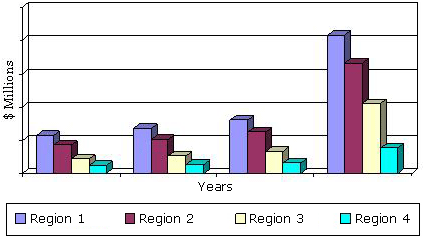MEMS Devices in Global Medical Markets
January 31, 2013
Wellesley, Mass. – Microfluidic/lab on chip (LOC) is considered a revolutionary technology for the life sciences and healthcare industry. This technology enables the integration of assay operations, such as sample pretreatment and sample preparation, on a single chip. This is radically changing the pharmaceutical and life-sciences research sector by changing the way procedures, such as DNA analysis and proteomics, are conducted.
It has a wide range of applications, such as drug delivery and in vitro diagnostics, in addition to research. This is a key reason for the surge in disease diagnosis at point-of-care and other in vitro diagnostic applications, which have distinct advantages of significant time and cost reduction in testing.
This sector is expected to rise to 72% of the market share of MEMS devices by 2017. The major growth drivers of this sector are research tools, which are expected to achieve significant growth of CAGR 28.8% from 2012 to 2017. Also, a surge from 2012 to 2017 in research applications, such as proteomics, genomics, and cellular analysis, is expected to boost this sector.
In terms of applications, the macro segments of the market include pharmaceutical and life-sciences research, in vitro diagnostics, home healthcare, and medical devices. Among all of these applications, research is expected to grow at the highest CAGR of 28.3% from 2012 to 2017.
The use of MEMS devices by different stakeholders is driving the market growth by adding to the demand of devices from different medical market segments as discussed above. This is also indirectly very encouraging for medical sector market players (especially big ones) that have diverse customer bases composed of different stakeholders and diverse product portfolios (such as diagnostics, research, and medical devices), as they can capitalize on the MEMS market by leveraging their existing resources to some extent. Moreover, a diverse set of devices catering to the needs of different stakeholders encourages new entrants into sectors of their choice to complement or suit their capabilities and potentials.
Additionally, the rapid emergence of disposable MEMS devices (e.g., disposable endoscopes) is adding to the convenience of and thus the demand for such devices. Integrated devices and advancements in inertial sensors, such as products for human motion analysis, are meeting the needs of the modernized healthcare delivery model, especially for the elderly patient sector, by adding the element of prevention. An example of product innovation is microneedles for drug delivery, which is gaining popularity by offering a pain-free and enhanced, accurate method of drug delivery. Similarly, the diagnostic devices have significantly reduced the sample testing time from hours to a few minutes, thus significantly adding value to the healthcare delivery model from different perspectives such as time efficiency, convenience, patient satisfaction, and ease of operations.
MEMS DEVICES IN GLOBAL MEDICAL MARKETS (HLC129A) has the following objectives:
- Provide a comprehensive analysis of MEMS products and applications in the medical market
- Identify the dynamics of each key market and their relevant business impacts
- Offer an analysis of key market developments
- Provide market forecasting of products and applications
- Highlight key market trends, drivers, restraints and opportunities
- Provide key recommendations.

MEMS Devices in Global Medical Markets( HLC129A )
Publish Date: Feb 2013
Data and analysis extracted from this press release must be accompanied by a statement identifying BCC Research LLC as the source and publisher. For media inquiries, email press@bccresearch.com or visit www.bccresearch.com/media to request access to our library of market research.
